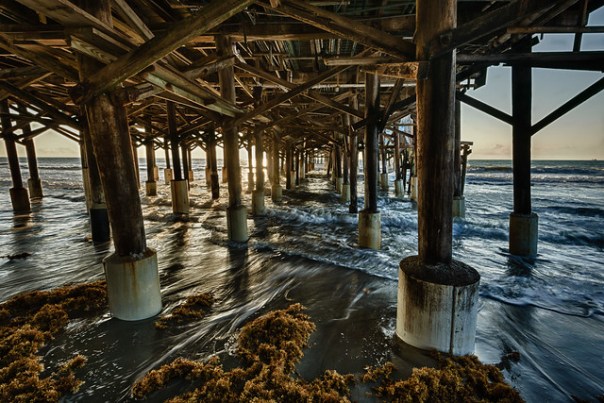At least it is at Viera Wetlands – a wonderful place to witness bird courtship and nesting behaviors.
This Great Blue Heron was lazy. He was raiding an abandoned nest close to his and scavenging sticks to bring back to his mate. A situation like this can be a great setup for photographers. Watch for a cycle or two and you’ll get a good idea of what’s going to happen next. It’ll allow you to anticipate and get good action / flight shots.
I was back at Viera Wetlands to check on the Sandhill Crane nest that I told you about a couple of weeks ago. Unfortunately, that nest has disappeared. The water in that spot is much higher and the birds abandoned it when it flooded.
Sandhill Cranes seem to be a very successful species, but I wonder about their nesting habits. Building in low-lying, marshy areas seems risky. How often do they lose eggs or chicks to flooding or predators like alligators, raccoons, etc?
We did spot two other Crane nests, although we almost drove right by the one below. We heard a bird calling as it flew by and stopped to watch it land. That was when we noticed its mate and nest. A few moments later the mate rose, revealing two eggs it had been tending. It stepped away and after a quick inspection to make sure all was well, the other one carefully took its place. I hope this nest and the second one we saw will survive.
I didn’t think our sunrise stop along the St. Johns river was that good, but I enjoyed making this photo of fishermen leaving the boat ramp before dawn.
The light was dim. I made a second exposure at a higher ISO to keep the shutter speed fast and the boat sharp. Then I merged the two frames in Photoshop.
You can click on the photos in this post to see larger versions. And you can read my previous posts about Viera Wetlands at this link: https://edrosack.com/category/viera-wetlands/, and view many more photos from Viera Wetlands in this album on Flickr: https://www.flickr.com/photos/edrosack/albums/72157623223995224
Thanks for stopping by and reading my blog. Now – go make some photos!
©2019, Ed Rosack. All rights reserved


































